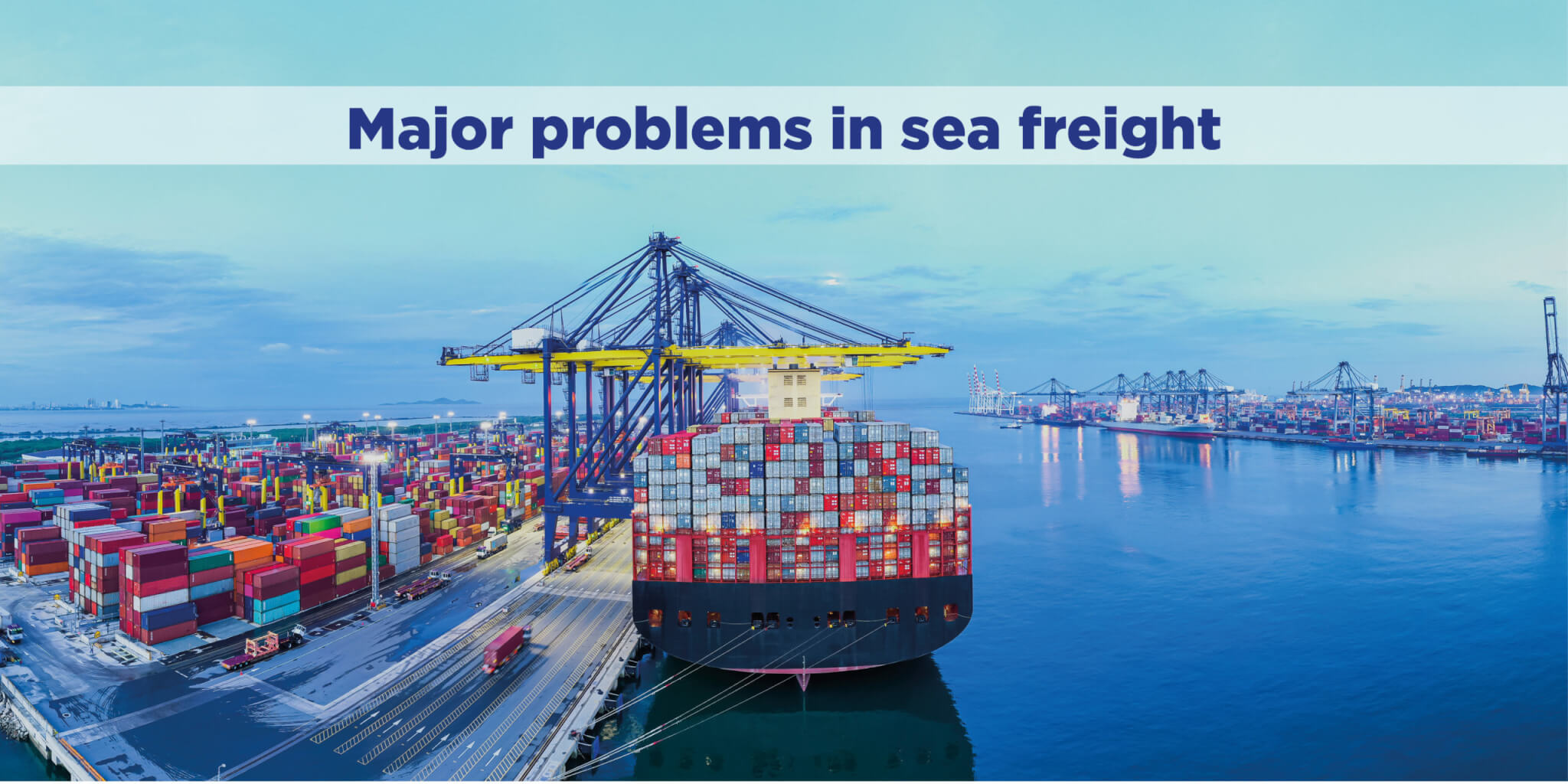Major problems in sea freight
19. Jan 2021The situation develops … and takes a sharper turn!
On 1 December 2020 we informed you about dramatic problems in sea freight in general and the consequences for container transportation from Asia to Europe in particular. The problem has grown to be of interest to the general public. All industries with global value chains, ranging from fashion to industrial goods, now suffer from significantly low availability of equipment (empty containers) and a completely insufficient cargo space on the ships in use by different shipping companies.
As of today, we can state that the situation has yet taken a sharper turn. Due to this market imbalance, the freight rates for simple sea freight are 5-6 times higher than the average contract rates over the last two years. Compared to the contract rates valid until the end of the third quarter, there are added costs of approximately 4000 – 5000 USD per container for many containers.
Depending on the goods transported in the container these added costs of transportation cause an increase in purchase prices of 8-25%.
However, a confirmation of the booking by the shipping company is not guaranteed, even if companies accept these horrendous spot prices. Often, companies are faced with short term cancellations and as a result, shipping delays. Our logistics team is working in close contact with our shipping service providers and our suppliers to find efficient solutions. However, these major problems will surely not be solved by Chinese New Year but will continue until – at least – the end of the first quarter.
We will continue to keep you updated on any developments in this situation.
01. Dec 2020
Major problems in sea freight
The economic consequences of the current pandemic are visible in many areas. Sea freight – a crucial factor of our business – is confronted with dramatic developments we would like to address. The consequences are clear already and will continue to the year 2021.
On January 1st, 2020, IMO2020-regulations came into effect. They aim to reduce greenhouse gas emissions by reducing the share of sulphur oxide from 3,5% to a maximum of 0,5% in marine fuel. As an alternative, ships can be equipped with emission control systems (so called scrubbers).
Around the Chinese New Year COVID-19-related plant closures caused reduced capacities in sea freight, which lead to cancelled departures (“Blank Sailings”), smaller container ships and the suspension on entire container ships. At the same time, the European economy fell victim to the Corona pandemic. At this time analysts predicted a loss of 23 billion USD for the whole shipping-industry.
But, things changed quickly… the assumed control over the virus, a restarted macroeconomic demand, fuelled by growing e-commerce due to an increased demand for household articles during the pandemic, as well as a never before seen mutual consent between the shipowners caused the freight market to turn in the opposite direction. As a result, the market was faced with additional Peak Season fees and an increase in contract rates. This development continued throughout the third quarter and was intensified on the spot market. Another factor is the continuing scarcity of 20’ and 40’ containers in Asian harbours.
Despite being faced with reduced container volumes, almost all ship owners can present highly profitable quarterly figures for the third quarter and take advantage of the situation after having had to fight on low rate levels for years. They are accelerating the situation and have relocated 20-30% of the reduced capacity to other routes. Especially on the trade lanes to the USA and Australia/New Zealand, ship owners can make 3.5 to 6.5 times the profit they make on the Trade Lane FEWB, connecting Asia with the Northern European harbours Hamburg, Antwerp, and Rotterdam. As these receiving countries do not export to the same extent, the global container allocation continues to get out of balance.
The fourth quarter is confronting European Importers with freight rates at a record high on spot markets. The SCFI (Shanghai Containerized Freight Index), the best-known index, is at a five-year high and lies 98% over the index before the pandemic and 153% over the index this time last year. (Source: hansa-online.de) Existing contracts are no longer met: Containers, checked in on time by the producers can no longer be checked in according to the originally negotiated conditions. In fact, freight cost per container today are 2.5 to 3 times higher than originally contracted. At this price it is barely possible for us to ship goods. Negotiated container allocations and volume forecasts no longer count, instead those who pay swim. Some ship owners only accept bookings for January 2021 at the earliest. This causes difficulties in supply as well as increases in prices, which is also what we are facing now.
In the meantime, the European Shippers’ Council (ESC) accused sea freight companies of exploiting the pandemic for profits. The global competition authorities are also on the case, however, there are no visible successes, yet.
An improvement of the situation for the first quarter of 2021 is not expected. Instead, the situation is suspected to change for the worse until the Chinese New Year 2021. Further forecast is not yet possible, as the market is changing dynamically.
As a 100%-importer, it is crucial that we keep an eye on this volatile situation to ensure supply for our customers. Together with our transport service providers and our producers we are doing our best to keep the negative consequences at a minimum for you and will continue to update you on the situation here.
Return to main screen















